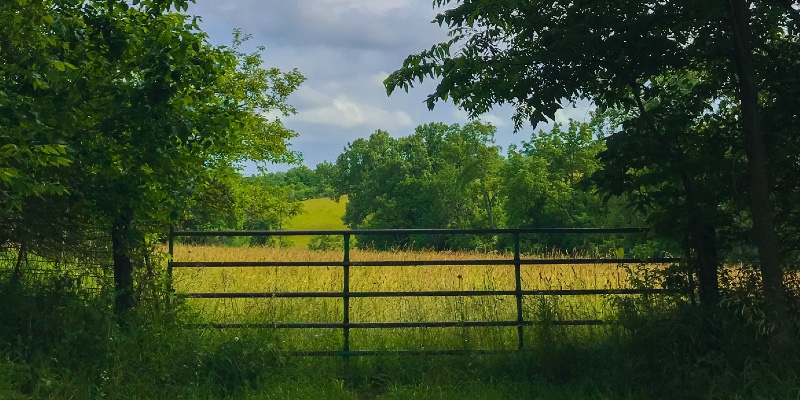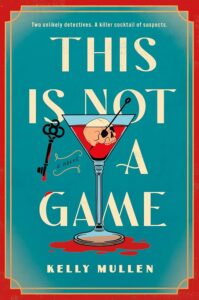“I can’t sleep,” said the man who is now my husband, turning to me in the hotel room where we were staying. It was our first trip away together as a couple. We were in Vienna, and it was a moment that should have been filled with all the sweetness and romance of nascent love.
But the reason he couldn’t sleep was my fault.
Over dinner, I veered down a dark conversational alleyway and cornered him, like Jack the Ripper selecting his next victim, with a morbid story. Over spätzle and wine, I recounted the grisly details of the infamous unsolved murder mystery for which my family’s Iowa home town is known—The Villisca Axe Murders. This mass killing of eight people has baffled law enforcement, historians and true crime aficionados for over a century. It’s a truly fascinating cold case that Bill James of Moneyball fame (and Rachel McCarthy James) recently attempted to solve through statistical analysis in the brilliant book, The Man from the Train.
After commandeering our conversation with lurid details of Villisca, I spent the dessert course (a lovely sachertorte) delving into Hinterkaifeck, another cold case that occurred a decade later on a farmstead in Germany and may have been committed by the same person. Highlighting all the gruesome similarities between Villisca and Hinterkaifeck, I left nothing to the imagination. And now, the man I was newly in love with was so deeply disturbed that he couldn’t fall asleep.
“Welcome to my childhood,” I responded. “I’ve been obsessed with those murders since grade school.”
Well, not just those two…
Murder mysteries crept into my creative subconscious at a young age. From the first time I pulled an Agatha Christie off the shelf at my aunt’s house, I was hooked. Then I wore out our VHS tapes of Clue and The Last of Sheila. I can also remember folding back the covers of my Stephen King paperbacks at school, so as not to attract undue attention from teachers. (I admit it probably would have been unsettling to walk past a ten-year-old reading Dolores Claiborne. Thankfully, I had parents who encouraged me to read whatever I pleased.) Mostly, I gravitated toward books like In Cold Blood and Midnight in the Garden of Good and Evil—true crime stories that took place in small towns like Villisca. They appealed to me because of their vivid portraiture and the sense of “something like that could never happen here.”
Both sides of my family hail from Southwest Iowa, so we often went back to Villisca to visit relatives. I’ll never forget the first time my parents drove me by the Axe Murder House. It appeared before us as we rounded a corner: a modest, white, two-story house with a small barn behind it, not far from the town square. As we slowly coasted past, I was mesmerized. In this pretty little town of 1,200 people, where everyone left their doors unlocked at night and knew their neighbors by their first names, some sinister figure had entered a sleeping household and committed one of the world’s first home invasion murders.
My young brain began to process various scenarios. Who could have done this and why? I had always loved solving puzzles, but this was a puzzle that defied resolution despite years of investigation. I sought information about it wherever I could. In those pre-YouTube days, I was able to track down a documentary that offered the leading theories of the time. My grandmother also found it fascinating. She and I would spend hours discussing those well-researched details along with lesser-documented ones, told and re-told over the years by other Villiscans.
Murder mysteries and small towns pair well. Like Chablis and Comté, they each bring out the complexities, quirks, and nuttiness of the other. Law enforcement might be the gatekeepers of information about a murder, but in small towns, the locals become the shapers of that information. Rumors and stories, often with embellishments, become folklore that is passed down through generations. Sometimes, even the physical evidence is too. My grandmother’s friend, the former mayor of Villisca, was once the caretaker of the actual axe used in the murders. This was after it had been handed down by various responsible residents over the years and even spent some time in a glass case at a local bookstore. The axe was eventually turned over to the Villisca Historical Society for safekeeping, and today you can find it on display at the Montgomery County Historical Society. The Villisca Axe Murder House is now a popular tourist attraction with both paranormal and true crime aficionados. You can even stay overnight there and book it online, like a bed and breakfast.
Of course, in my favorite subgenre of crime fiction, the whodunit, a village mystery is always resolved tidily. Frustrating loose ends aren’t present like they are in true crime. The killer is cleanly revealed, like the prestige of a magic trick. Entertainment is the goal, and the best ones create a rich sense of place that enhances the overall story. Sherlock Holmes says in The Copper Beeches: “It is my belief, Watson, founded upon my experience, that the lowest and vilest alleys of London do not present a more dreadful record of sin than does the smiling and beautiful countryside.”
It’s that juxtaposition, the contrast between bloodshed and the cozy blanket of normalcy, that draws us in. Small town murder mysteries are the Venn diagram overlap between voyeurism and puzzling. Snooping, eavesdropping, theorizing, problem-solving, gossiping… they all tickle the synapses in that oh-so-titillating gap—between what we know and what we want to know.
***














